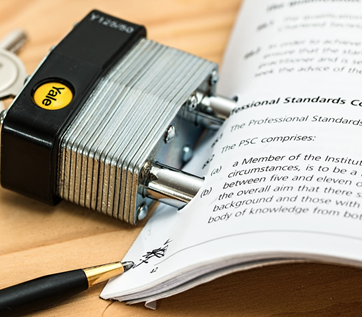
There can be as many methods for constructing a donation agreement as there are libraries, and a library or institution’s approach to donation agreements can change over time as institutional priorities change and new personnel take over key responsibilities. Common elements include the name of the donor, description of donation, a transfer of ownership, access restrictions, transfer of intellectual property rights, and information about what happens if some of the collection is separated from the whole (Society of American Archivists, 2013). Some donation contracts may be kept very simple to avoid intimidating possible donors with excessive legalistic documents, others may be extremely explicit documents that capture any conceivable future situation that may be encountered (Hirtle, et al, 2012).
A donation agreement can smooth the way for future digitization of a collection or hinder future uses of collection material. These agreements can take different forms like letters of intention, negotiated formal agreements or contracts, deeds of gift, or other ad hoc forms (Walle, 1985). With all of the variables possible in donation agreements, it shouldn’t be surprising that some donor stipulations on older collections can take an archive or special collections by surprise. Without talking about any specific contracts, I wanted to go over a few example stipulations that could be problematic when evaluating a collection for digitization.
The very first example isn’t an added stipulation so much as a lack of one. Donation contracts that do not address intellectual property ownership can cause obstacles and delays when assessing whether a collection can be digitized. These obstacles grow larger as more time passes and the relationship with the donor becomes more distanced. Making sure that donation contracts include mention of intellectual property is especially important when the material donated is authored by the donor, like collections of papers and correspondence.
The next group of examples are problematic as far as they require solid communication and documentation to make sure that all employees of an archive know that a collection must be treated differently than the others over time. These stipulations include restrictions on deaccessioning or separating any part of a collection from the whole, requirements that specific credit be given by researchers using a collection, and restrictions on how the material should be housed differently than is standard process for the archive. These often fall into the ‘access’ part of the agreement and may indicate that donors were either unfamiliar with or uncomfortable with archival procedures, appraisal, weeding, and reappraisal processes (Walle, 1985).
Related to these restrictions on how a collection may be treated, are stipulations that name a specific party, not part of the library, as responsible for evaluating researcher requests to access, copy, digitize, or publish the material. This type of stipulation can cause confusion over who can make decisions about the collection, especially if the relationship with the donor or specific party has become more distanced over time. Stipulations that take authority over digitization away from the library can hamper any future digital work with a collection.
Finally, donation agreements can restrict what can be legally done with the material beyond what might be allowed by laws like copyright. For example, a donation agreement that transfers intellectual property ownership to the library would allow the library to digitize the material in the future, as long as no other issues were present. But a donation contract that later disallows copying of the collection and restricts access to a supervised room where no mechanical means of reproduction is permitted, effectively removes the ability for that library to copy or scan the material. Copyright law may also allow copying for personal use, direct quotation in a research paper, and other activities that could be argued as fair use. A donation agreement that requires donor permission for personal use copies or direct quotation restricts the rights a researcher would normally have under copyright law.
Understanding stipulations in donor agreements can be very complex and yet it is just one of many variables that are examined when assessing a collection for digitization. Outside of the donation agreement, a library may look at several aspects of a physical collection when assessing it for digitization, such as age and frailty, researcher demand, privacy and ethical considerations, copyright, and fit with library initiatives.
YOU MAY ALSO LIKE:
- Digitization in Museums and Libraries: Confusing the Public and the Public Domain
- Digital Collections Rights Statements
REFERENCES
- Hirtle, P. B.; Kenney, A. R.; Ruttenberg, J. (2012) Digitization of Special Collections and Archives: Legal and Contractual Issues. Research Library Issues 279. https://doi.org/10.29242/rli.279
- Society of American Archivists (2013) A Guide to Deeds of Gift. https://www2.archivists.org/publications/brochures/deeds-of-gift.
- Walle, D. F. (1985). The Deposit Agreement in Archival Collection Development. The Midwestern Archivist, 10(2), 117–127. http://www.jstor.org/stable/41101650